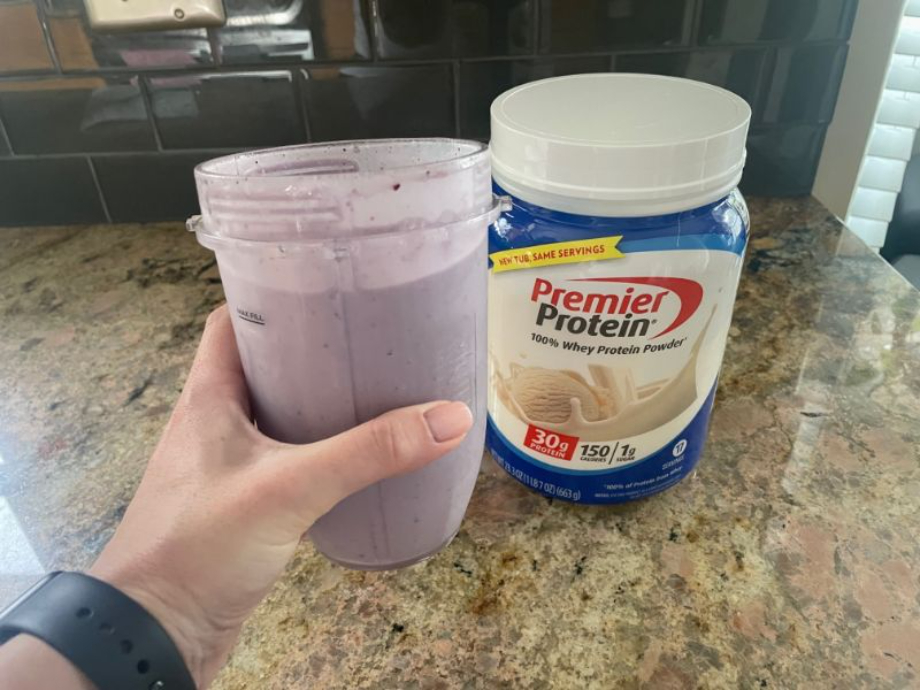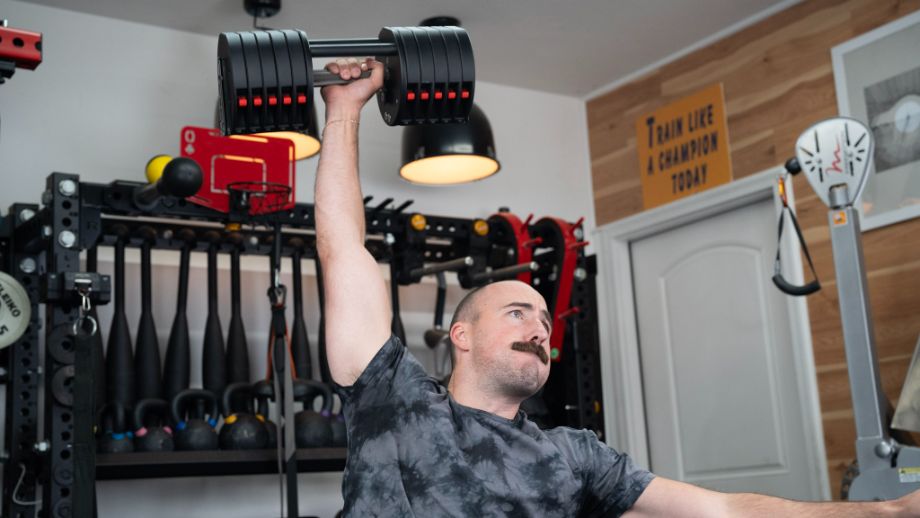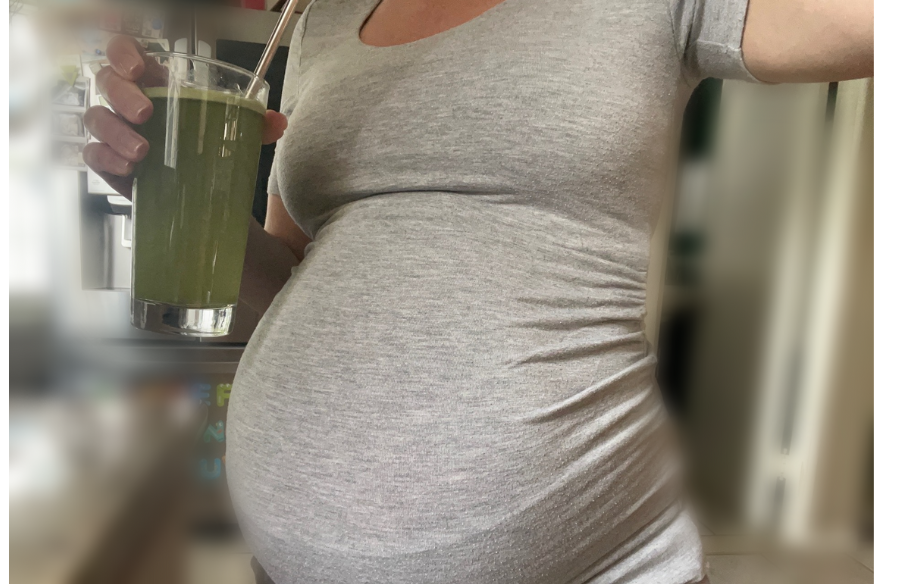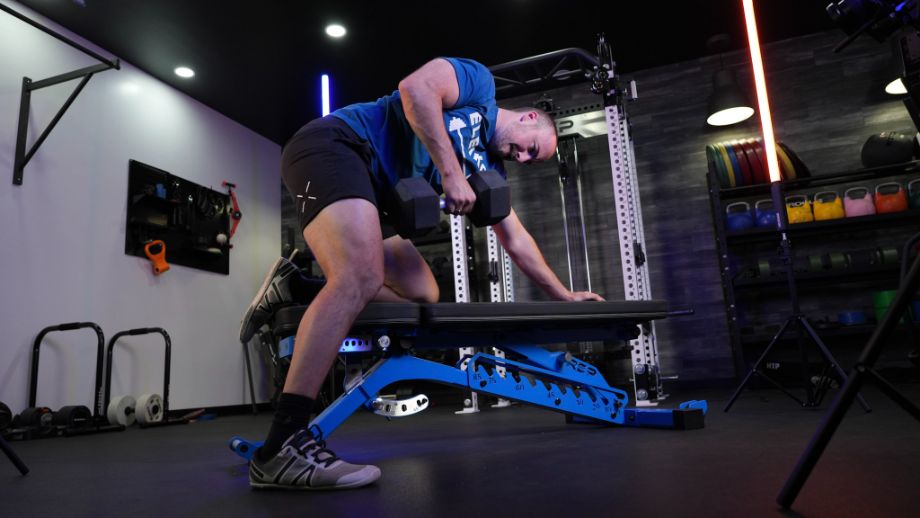The convenience of being able to throw protein powder in a shaker bottle with water is ideal for post-workouts, quick snacks, or having protein on the go. But sometimes, you just want more from your protein powder.
That’s why we sourced and adapted recipes from some of the best protein powders for smoothies that can help you kick off your day or satisfy you after a workout. We also made sure to pick protein smoothie recipes with nutrient-dense ingredients like fruits and vegetables. Let’s dive in.
Medical disclaimer: This article is intended for educational and informational purposes only. It is not intended as a substitute for medical advice. For health advice, contact a licensed healthcare provider.
Benefits of High-Protein Smoothie Recipes
Before we cover the top health benefits of protein, it’s worth mentioning that smoothies are super easy to make and often require less effort than traditional meals, which is ideal for busy schedules. Many of the recipes we included feature frozen fruits, so you won’t have to worry about your fresh produce going bad.
In addition to convenience, adding protein smoothies to your routine can help increase your protein intake, which can help you build and maintain muscle. Protein is also known to help keep you satisfied1, control appetite2, and aid with weight loss3.
RELATED: Is Protein Powder Good For Weight Loss?
How to Make a Healthy Protein Smoothie Recipe
You’ll need just a few things to make a protein-packed smoothie for breakfast or post-workout. First, you’ll need a blender. Second, you’ll need one of the best protein powders on the market. And third, you’ll need mix-ins like frozen fruits and veggies to boost the flavor (and nutrients), carbs like oats, and healthy fats like nut butters or avocado.
Depending on your preference and dietary restrictions, you’ll either use water, milk, or a non-dairy substitute (like almond milk or coconut milk) as the liquid for any of the following recipes. Additionally, ice cubes are always an option to make your smoothie colder or thicker.
Speaking of dietary restrictions, be sure to check out our guide on types of protein powders ranging from pea protein to egg protein powders to choose the best option for your needs.
- Banana Berry Smoothie
- Cinnamon Banana Bread Protein Smoothie
- Coffee Protein Smoothie
- Dark Cherry Protein Fruit Smoothie
- Strawberry Banana Protein Smoothie
- Tropical Sunrise Protein Smoothie
- Galaxy Brownie Protein Smoothie
- Green Smoothie with Protein
Banana Berry Smoothie
Attention plant-based eaters! This is a vegan-friendly, high-protein smoothie packed with antioxidants. Berries (even frozen ones) contain a large amount of vitamin A, vitamin C, and vitamin E, which act as antioxidants4 and may aid with inflammation. Plus, adding berries to vanilla protein powder makes for a delicious smoothie.
We adapted this recipe from Vega, which is a brand dedicated to providing plant-based protein and nutrition products. We opted to substitute frozen raspberries for mixed berries to offer more variety.
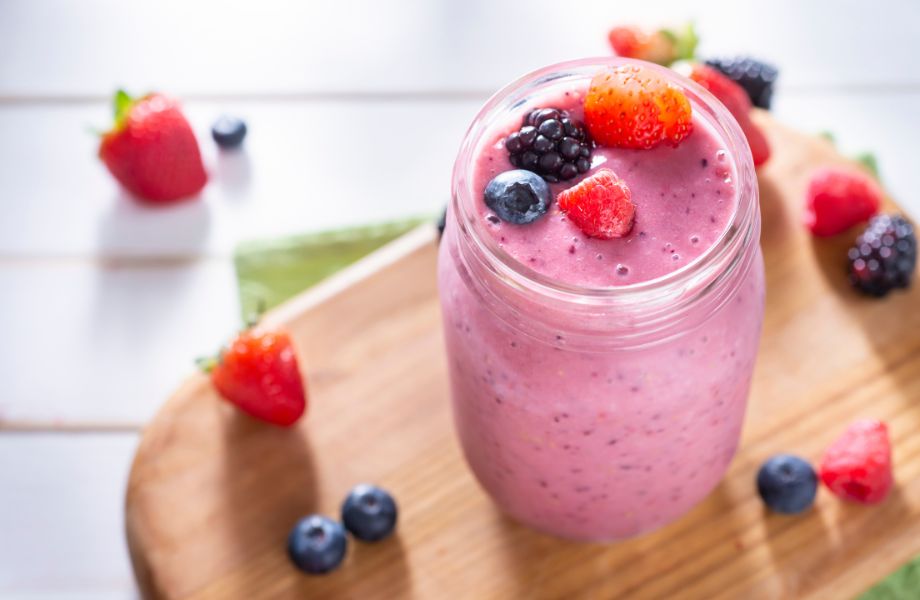
RELATED: Best Vegan Protein Powder
In a blender, you’ll combine:
- 1 scoop Vanilla Vega Sport Protein
- 1 frozen banana
- 1 tbsp nut butter (like peanut butter or cashew butter)
- ½ cup frozen mixed berries (raspberries or blueberries work too)
- 1 cup water or non-dairy milk substitute
- A dash of cinnamon, optional
Recipe by Vega
Cinnamon Banana Bread Protein Smoothie
If you have memories of fresh banana bread for breakfast as a kid, this recipe is for you. It features plain Greek yogurt for added thickness (and protein), but you can opt out if you prefer a thinner smoothie. We adapted this recipe from Legion Athletics, which offers a Cinnamon Cereal flavor whey protein, but this can also be made with a vanilla protein powder.

In a blender, you’ll combine:
- 1 scoop Legion Athletics Whey+ (Cinnamon Cereal flavor)
- 1 banana, frozen
- 1 cup milk or dairy-free alternative
- 1/4 cup nonfat plain Greek yogurt
- 1 tablespoon almond butter
- 1/2 tablespoon honey or maple syrup
- 1 teaspoon vanilla extract
- 1 teaspoon ground cinnamon
- 1/4 teaspoon freshly grated nutmeg
Recipe by Legion Athletics
Coffee Protein Smoothie
This recipe isn’t the most filling because it doesn’t offer carbohydrates like bananas or oats to help keep you satiated—but it does have coffee. We know coffee fiends sometimes can’t decide between caffeine and protein. Why not have both?
We adapted this protein smoothie recipe from Legion Athletics and doubled the brewed coffee to kick up the caffeine content. If you’re watching your caffeine intake, stick with the 2 tablespoons from the original recipe.
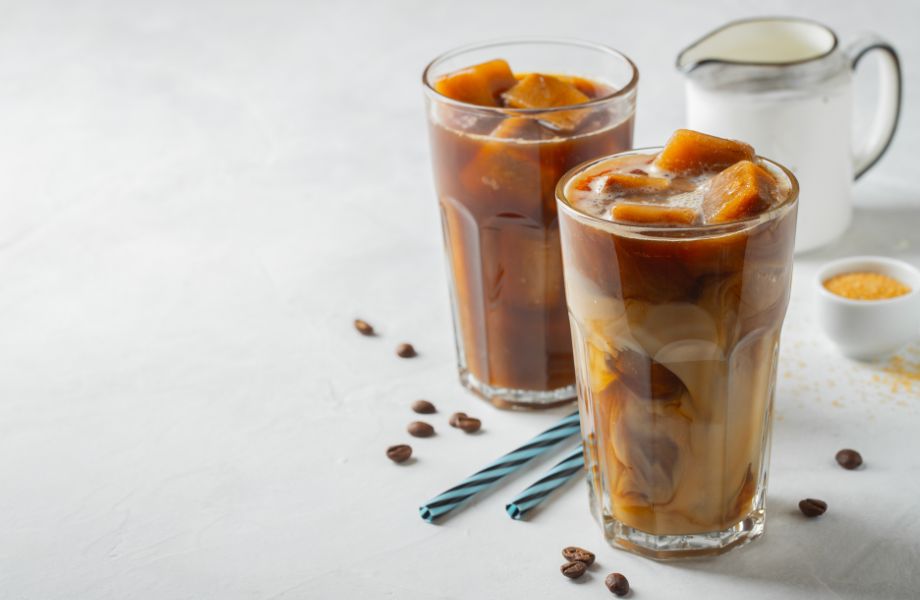
In a blender, you’ll combine:
- 1 scoop Legion Athletics Whey+ (Mocha Cappuccino flavor)
- 1 cup milk or dairy-free alternative
- ¼ cup brewed coffee
Recipe by Legion Athletics
Dark Cherry Protein Fruit Smoothie
Cherries are low on the glycemic index, making this protein smoothie excellent if you’re managing your blood sugar levels. We adapted this recipe from Garden of Life with the brand’s grass-fed whey protein. Cherry pairs well with both vanilla and chocolate, so feel free to scoop up what you have on hand.

In a blender, you’ll combine:
- 1 scoop of Garden of Life Raw Grass-Fed Whey (Vanilla)
- 1 tsp maple syrup
- 1 cup milk or non-dairy alternative (like soy milk)
- ½ cup coconut water
- ½ cup frozen dark cherries
- ¼ cup frozen banana slices
Recipe by Garden of Life
Strawberry Banana Protein Smoothie
Strawberry and banana smoothies make an irresistible fruity flavor combo for a breakfast smoothie or a post-workout snack. This recipe has protein, carbs, and fats for a well-rounded smoothie with little-to-not prep time with frozen fruits. We adapted this recipe from Allrecipes and opted to swap fresh fruits for frozen fruits to help make this recipe even faster to get whipped up.

In a blender, you’ll combine:
- 1 scoop Kaged Whey Isolate protein powder (Vanilla)
- 1 cup frozen strawberries
- 1 frozen banana
- 1 tbsp nut butter (like almond butter)
- 1 cup of liquid (water, milk, or non-dairy substitute)
Recipe by Allrecipes
Tropical Sunrise Protein Smoothie
This tropical sunrise smoothie will make you think you’re waking up in paradise (not finishing up a grueling workout). We adapted this protein smoothie recipe from Ascent Protein, which suggested using the Strawberry flavor whey protein powder, but we switched it to Vanilla for versatility.

In a blender, you’ll combine:
- 1 scoop Ascent Whey Protein (Vanilla)
- ½ cup liquid (water or milk of choice)
- ½ cup unsweetened plain Greek yogurt
- ¼ cup frozen mango chunks
- ¼ cup frozen pineapple chunks
- ¼ cup frozen strawberries
- ½ banana (fresh or frozen)
Recipe by Ascent
Galaxy Brownie Protein Smoothie
This is a recipe that will fill you up and get you ready for your day with carbs from fruit and healthy fats from an avocado and plain Greek yogurt.
We adapted this recipe from Premier Protein and swapped out the cottage cheese that was featured on the ingredient list for plain Greek yogurt. Both provide protein, fats, and a creamy texture, so you can use whatever one you prefer or have on hand.
The original recipe has an option to add sprinkles that give this shake its galaxy name.

In a blender, you’ll combine:
- 1 scoop Premier Protein Powder (Chocolate)
- 1 cup liquid (water, milk, or non-dairy)
- 1 frozen banana
- ½ frozen large avocado
- ½ cup plain Greek yogurt
- 2 tbsp dark cocoa powder
- 1 tbsp chia seeds
Recipe by Premier Protein
Green Smoothie with Protein
Green smoothies usually contain leafy greens like spinach, but you can use kale if you have it on hand. We adapted this recipe from Live Eat Learn, a blog with tons of healthy meals and recipe ideas. We added protein powder to make this recipe a high-protein option for breakfast or an any-time snack or meal.

RELATED: High-Protein Meals
In a blender, you’ll combine:
- 1 scoop protein powder KOS Vegan Protein Powder
- 1 cup almond milk or coconut milk
- 1 frozen banana
- 1 cup apple or pear
- 1 cup spinach
- Pinch of cinnamon optional
Recipe by Live Eat Learn
Protein Smoothie Recipes: Final Thoughts
When it comes to adding more protein to your diet, a protein smoothie is an ideal place to start. It doesn’t require new cooking skills—just a blender and some frozen ingredients. You don’t even need milk or almond milk; you can just use water. Ice is always an option if you like your smoothies cold and extra thick.
Our expert product testers here at Garage Gym Reviews have tested over 80 different protein powders, many of which have also been vetted by registered dietitians on our expert panel. We know there is a lot to choose from, so we have tons of protein powder roundups (like the best protein powder for sensitive stomachs) and helpful guides (like plant-based protein powder vs. whey) to provide you with the best, most accurate information so you can make the best decision for your unique needs.
Protein Smoothie Recipes: FAQs
What can I put in my smoothie for protein?
Protein powder is one of the easiest ways to add a ton of protein to your smoothies. Some of the best protein powders on the market have between 20 and 30 grams of protein per serving.
What do you mix protein powder with?
You can mix protein powder with water, milk, or a non-dairy milk substitute in a shaker cup for a traditional protein shake. You can also use a blender to mix protein powder, liquid, fruits, leafy greens, nut butters, and oats for a more robust, filling drink.
What ingredients in smoothies keep you full?
Adding nut butters and oats may help a traditional protein smoothie feel more satiating by adding fats and carbohydrates.
What thickens a smoothie?
For thicker, creamier smoothies try using milk instead of water (or a dairy-free alternative) or frozen bananas. A few ice cubes can also thicken a smoothie.
These statements have not been evaluated by the Food and Drug Administration. This product is not intended to diagnose, treat, cure, or prevent any diseases.
References
- Olas B. Berry Phenolic Antioxidants – Implications for Human Health? Front Pharmacol. 2018;9:78. Published 2018 Mar 26. doi:10.3389/fphar.2018.00078
- Morell, P, Fiszman, S. Revisiting the role of protein-induced satiation and satiety. Food Hydrocoll. 2017;68:199-210. doi:10.1016/j.foodhyd.2016.08.003
- Kohanmoo, A, Faghih, S, Akhlaghi, M. Effect of short- and long-term protein consumption on appetite and appetite-regulating gastrointestinal hormones, a systematic review and meta-analysis of randomized controlled trials. Physiol Behav. 2020;226:113123. doi:10.1016/j.physbeh.2020.113123
- Leidy, HJ, Clifton, PM, Astrup, A, et al. The role of protein in weight loss and maintenance. Am J Clin Nutr. 2015;101(6):1320S-1329S. doi:10.3945/ajcn.114.084038


